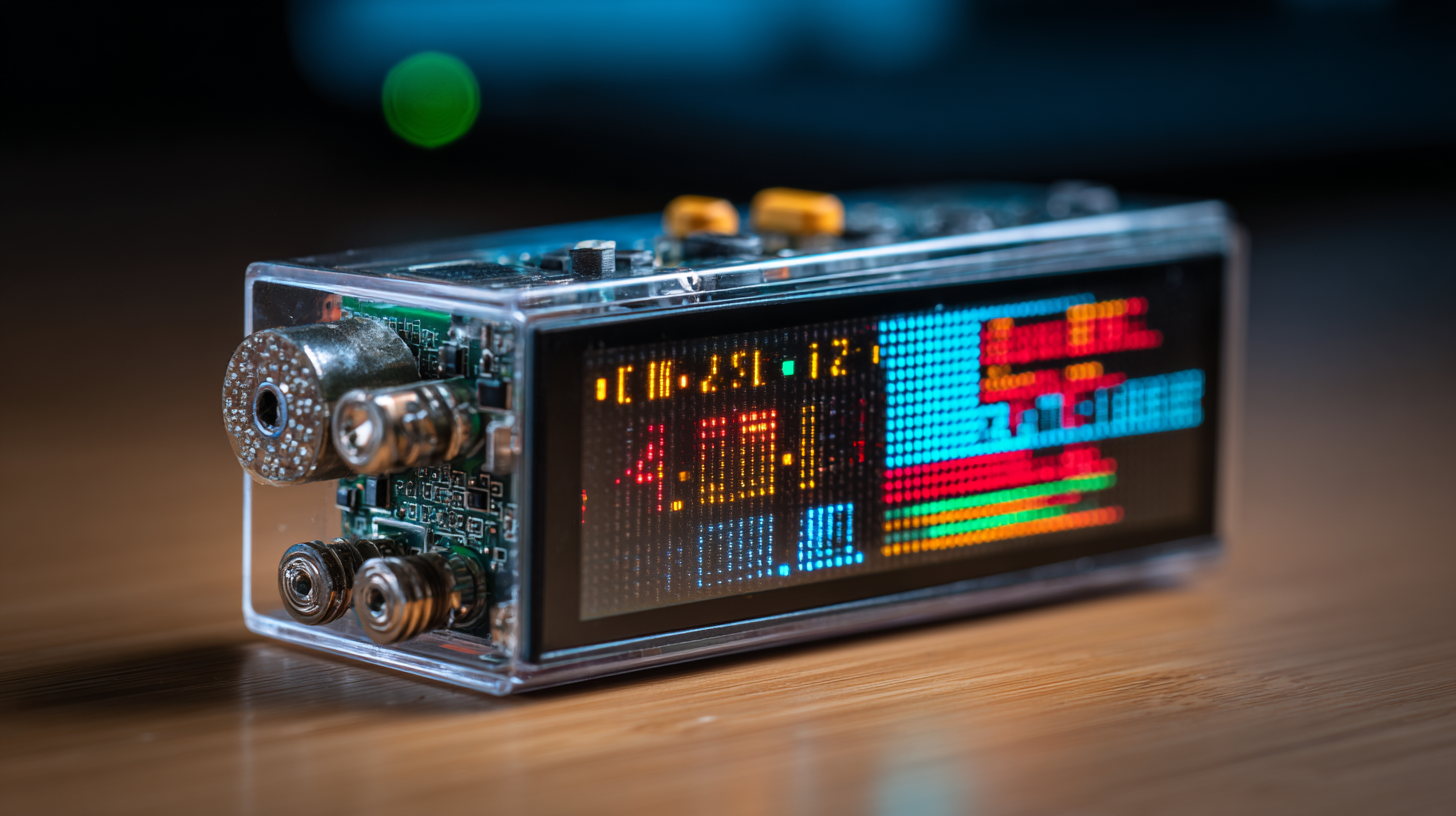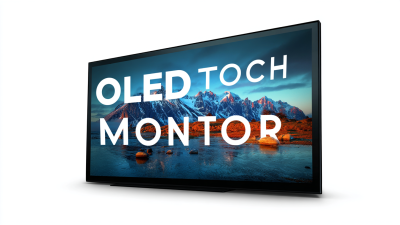In today's rapidly evolving tech landscape, the choice of suitable components can significantly impact project success. One crucial element that designers often overlook is the Alphanumeric LCD Display, a versatile interface used in a multitude of applications ranging from consumer electronics to industrial devices. According to a recent report by MarketsandMarkets, the global LCD display market is projected to reach $171 billion by 2025, with alphanumeric displays playing a vital role due to their cost-effectiveness and readability in low-light environments. The increasing demand for user-friendly interfaces has further propelled the popularity of alphanumeric LCDs, making it essential for developers to understand the key factors in selecting the right display for their specific needs. This blog aims to guide you through the process of choosing the ideal alphanumeric LCD display, ensuring your project achieves optimal functionality and user satisfaction.

When selecting the right alphanumeric LCD display for your project, understanding the key features and specifications is crucial. Alphanumeric LCD displays come in various sizes and resolutions, with common configurations like 16x2 and 20x4 characters being widely utilized in consumer electronics. According to a report by MarketsandMarkets, the global LCD market is expected to grow from
$95.37 billion in 2020 to $129.86 billion by 2025, highlighting the rising demand for LCD technologies, including alphanumeric displays.
One critical specification to consider is the display's contrast ratio, which affects readability under different lighting conditions. A high contrast ratio (typically above
1000:1) ensures that the text is clear and legible, even in bright environments. Additionally, the viewing angle is an essential factor, with most alphanumeric displays offering a typical angle of around
60 degrees. This specification is vital for applications where the user may not be directly in front of the display. Furthermore, understanding the power requirements and
interface options, such as parallel or serial connections, will aid in seamless integration into your project.

When selecting the right alphanumeric LCD display for your project, assessing your project requirements is crucial. Size is one of the first parameters to consider; it plays a significant role in the overall user experience and integration into your device. For instance, a compact display may be ideal for handheld devices, while larger displays may be necessary for applications that require enhanced readability and information density. This consideration will also help determine the physical layout and the available space in your design.
Resolution and interface needs further dictate your display choice. Higher resolution is paramount for applications where clarity and detail are essential, such as in user interfaces for smart devices, where users interact with various data representations. Moreover, the choice of interface—whether SPI, I2C, or parallel—can influence the complexity of your system. It is essential to evaluate how seamlessly the display can integrate with your existing hardware and software frameworks, as poor compatibility can lead to increased design challenges and development time. By focusing on these requirements, you can ensure that you select an alphanumeric LCD display that meets your project's specific needs.
This bar chart compares the essential requirements for selecting the right alphanumeric LCD display for your projects, focusing on size, resolution, and interface considerations.
When selecting the right alphanumeric LCD display for your project, understanding the various technologies available is crucial. Common types include Twisted Nematic (TN), In-Plane Switching (IPS), and Vertical Alignment (VA). Each technology offers distinct advantages and disadvantages. For instance, TN displays are known for their lower manufacturing costs and faster response times, making them a popular choice in budget-conscious applications. However, they often suffer from narrower viewing angles and poorer color reproduction compared to IPS panels, which provide superior color accuracy and wider viewing angles, ideal for portable devices and user interfaces. According to a recent industry report by ResearchAndMarkets, the global market for IPS technology is expected to grow by over 15% annually, highlighting its increasing demand in various sectors.
VA displays, on the other hand, strike a balance between the two, offering better contrast ratios and viewing angles than TN but often at a higher price point than both TN and basic IPS. The decision ultimately hinges on the specific requirements of your application—whether you prioritize cost, performance, or visual quality. Data from the Display Technology Association indicates that nearly 60% of manufacturers favor IPS technology for consumer electronics due to its versatility and performance, reflecting a growing trend towards higher-quality displays in consumer products. As such, evaluating these display technologies systematically can lead to a more informed and effective choice for your project’s needs.
| Display Type | Resolution | Brightness (cd/m²) | Power Consumption (mA) | Typical Applications | Advantages | Disadvantages |
|---|---|---|---|---|---|---|
| Character LCD | 16x2, 20x4 | 300 | 20-30 | Home appliances, Basic electronics | Low cost, Simple interface | Limited display area, Low resolution |
| Graphic LCD | 128x64, 240x128 | 400 | 30-50 | Mobile devices, Industrial control | Higher resolution, Flexible graphics | Higher cost, More complex programming |
| OLED Display | 128x64, 256x64 | 1000 | 20-40 | Wearables, High-end devices | Excellent contrast, Wide viewing angles | More expensive, Limited lifespan |
| TFT Display | 320x240, 800x480 | 600 | 50-70 | Smartphones, Tablets, Interfaces | Vibrant colors, High resolution | Higher power consumption, Expensive |
When selecting an alphanumeric LCD display for your project, it's essential to consider power consumption and longevity, especially in the context of sustainability. A display that operates efficiently not only reduces energy costs but also minimizes the environmental impact.
 Look for displays that leverage low-power technologies, as these can significantly extend battery life in portable applications. Additionally, LCDs with optimized backlighting or those designed for lower voltage operations can enhance energy savings while still providing excellent visibility.
Look for displays that leverage low-power technologies, as these can significantly extend battery life in portable applications. Additionally, LCDs with optimized backlighting or those designed for lower voltage operations can enhance energy savings while still providing excellent visibility.
Longevity is another critical factor, as the lifespan of the display can affect the overall sustainability of your project. Consider the display's operating temperature range and resistance to environmental factors such as humidity and dust. Displays designed for durability often require less frequent replacement, which translates into fewer resources consumed over time. Furthermore, investing in displays with proven longevity means less electronic waste, aligning your project with sustainable practices. By carefully evaluating these aspects, you can ensure that your choice of alphanumeric LCD not only meets your project needs but also contributes positively to environmental sustainability.
When integrating alphanumeric LCD displays into your projects, ensuring smooth implementation starts with selecting the right display and understanding the connections involved. According to the Display Industry Report 2023, the alphanumeric LCD market is expected to grow at a CAGR of 5.2% over the next five years, highlighting the increasing demand for these versatile displays. When choosing a display, consider factors such as the height of characters, interface compatibility, and the operating voltage. For instance, a typical alphanumeric display may range from 16x2 to 20x4 in character dimensions, and knowing your project's requirements can significantly influence your choice.
Connecting your alphanumeric LCD display should also be executed with care. Utilizing wired connections such as I2C can simplify implementation, reducing the number of GPIO pins required. A study by TechResearch Analytics found that projects employing I2C for LCD connections reported a 30% decrease in setup time compared to traditional parallel connections, making it a preferred method in many applications. Additionally, always ensure you double-check the wiring configuration, as incorrect connections can lead to display malfunction. Understanding these integration tips will make your project not only more efficient but also enhance the overall user experience of your product.






